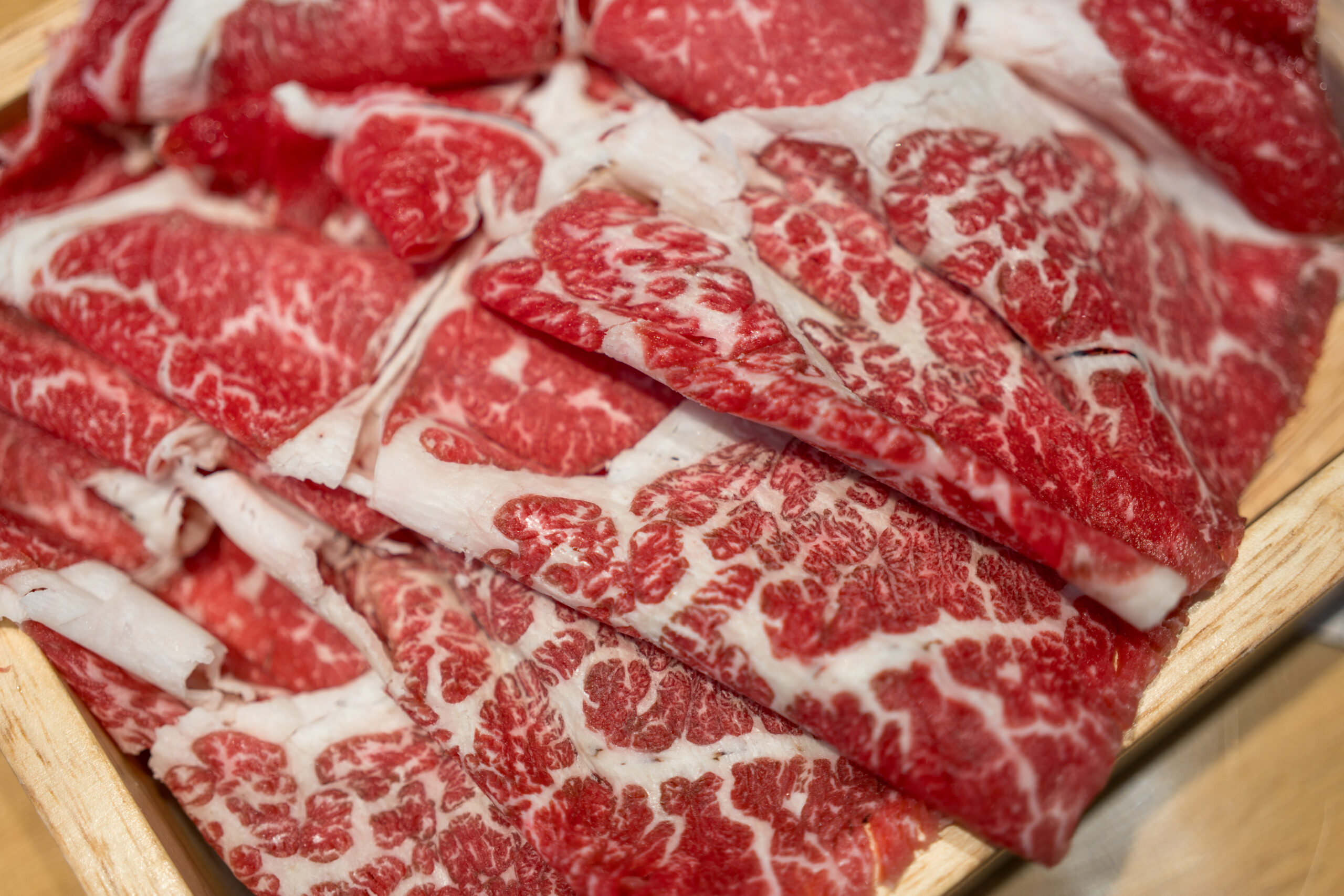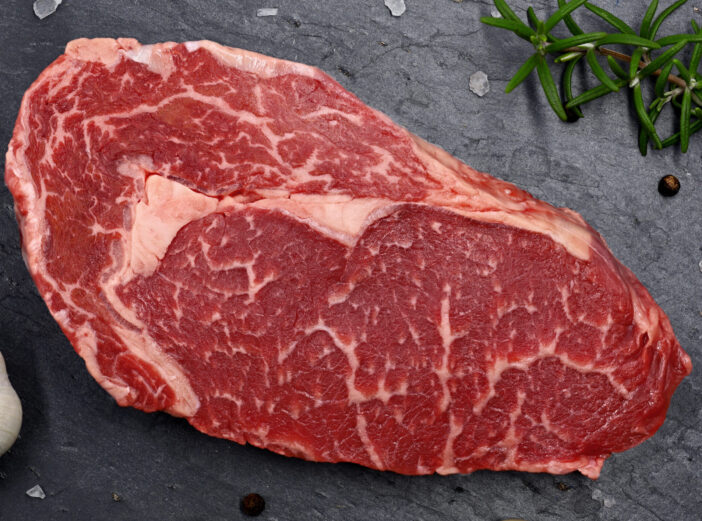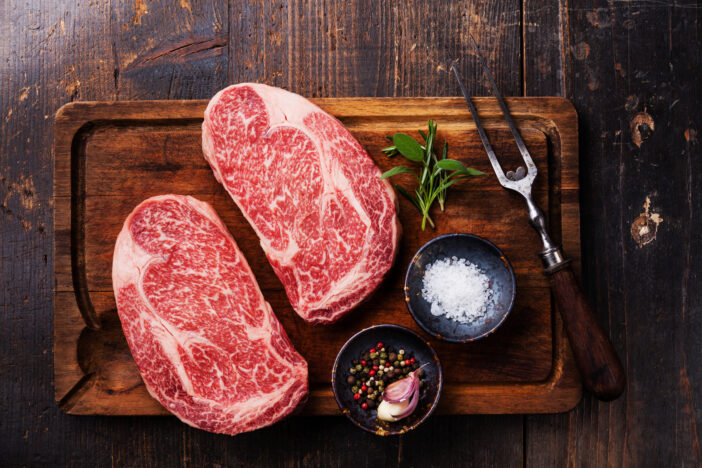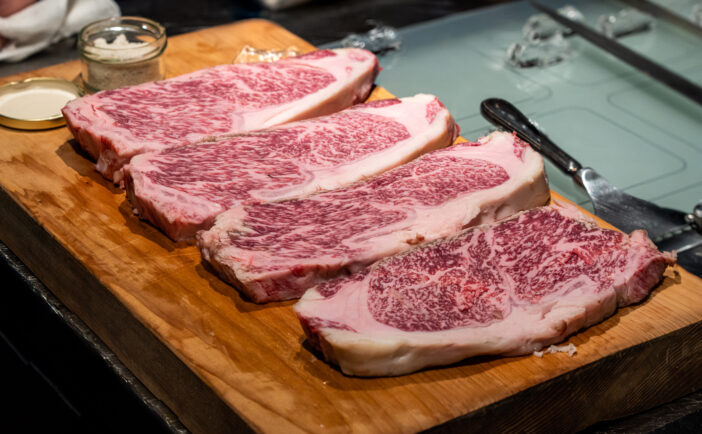5 Beef Marbling Scores Tips for Better Flavor and Tenderness
Understanding beef marbling scores is crucial for enhancing your dishes. Choose the right score to match your cooking methods and preferences, ensuring gourmet results that impress guests.

Beef marbling scores can seem like a mystery, but they hold the key to flavor and tenderness. Understanding these scores helps you make informed choices for your next barbecue or gourmet dinner.
Disclosure: As an Amazon Associate, this site earns from qualifying purchases. Thank you!
Explaining Beef Marbling Scores
The Basics of Marbling Scoring
Beef marbling scores measure intramuscular fat. This fat enhances flavor and tenderness. Scores range from low to high, typically 1 to 12 in the U.S. Higher scores mean more marbling and better taste.
How Are Marbling Scores Measured?
Inspectors visually assess marbling. They look at the ribeye between the 12th and 13th ribs. More tiny white flecks of fat inside the muscle mean a higher score. This method ensures consistency in beef quality.
Different Marbling Score Systems

United States Department of Agriculture (USDA) Grading
The USDA grading system focuses on Prime, Choice, and Select categories. Prime features the highest level of marbling, making it juicier and more flavorful. Choice offers good marbling and tenderness, while Select has the least, often requiring marinade for better taste.
Japanese Wagyu Scoring System
The Japanese Wagyu scoring system uses the Beef Marbling Standard (BMS) scale, ranging from 1 to 12. Scores of 10 to 12 indicate the highest quality with extensive marbling. Wagyu beef at this level delivers incomparable tenderness and flavor.
Australian Marbling Score System
Australia employs the Meat Standards Australia (MSA) marbling score from 100 to 1190. Higher numbers signify better marbling. A score of 600 or above offers premium eating quality, equating to the rich flavor and exceptional juiciness that rivals top-tier Prime cuts.
Impact of Marbling Scores on Cooking and Taste

How Marbling Affects Cooking Methods
Marbling influences your choice of cooking methods. Higher marbling scores (Prime or Wagyu BMS 8-12) suit quick, high-heat techniques like grilling or searing. These methods enhance the fat’s melt, enriching flavor and juiciness. Lower marbling scores (Select, BMS 1-4) work better with slow-cooking methods like braising, which tenderize leaner cuts, ensuring they stay succulent without drying out.
The Taste Difference: Higher vs Lower Marbling Scores
Marbling dramatically impacts taste. Higher marbling scores deliver rich, buttery flavors due to the intramuscular fat that melts during cooking. This fat enhances tenderness and provides a luxurious mouthfeel. Lower marbling scores offer a milder flavor profile and firmer texture, best appreciated in leaner dishes where robust, additional seasoning can complement the natural beef taste.
How to Choose the Right Marbling Score for Your Needs

Choosing the right marbling score depends on your culinary goals and personal preferences. Here’s a quick guide to help you make the best choice.
Understanding Marbling Scores for Various Cuisines
- Japanese Cuisine: Opt for Wagyu BMS 8-12 for dishes like Sukiyaki or Shabu-Shabu. High marbling ensures tenderness and a buttery flavor.
- American Cuisine: Go with USDA Prime for grilling steaks; USDA Choice works well for versatile preparations, from roasts to pan-seared dishes.
- Korean BBQ: Select Wagyu BMS 5-7. This provides juiciness and flavor without overpowering marinades.
- European Cuisine: Choose USDA Select for classic beef stews or braises. Leaner cuts hold up well to slow-cooking methods and hearty flavors.
Considerations
- Cooking Method: Pick higher scores for grilling and searing, and lower scores for slow cooking.
- Flavor Preference: Go for higher marbling if you enjoy rich, buttery flavors. Choose lower marbling for a milder taste.
- Budget: Higher marbling scores come with a higher price. Assess your budget to balance cost and quality.
- Dish Type: Use high scores for premium dishes like filet mignon; select lower scores for everyday meals like stir-fries.
Make informed choices to elevate your beef dishes to gourmet standards.
Frequently Asked Questions
What are beef marbling scores?
Beef marbling scores measure the amount and distribution of intramuscular fat in the meat. Popular systems include USDA, Japanese Wagyu, and Australian systems. Higher scores indicate more marbling, which typically means better flavor and tenderness.
Why is beef marbling important?
Marbling affects both the flavor and tenderness of the beef. Higher marbling scores usually result in richer flavors and more tender meat, making it ideal for quick, high-heat cooking. Lower marbling scores are firmer and better suited for slow-cooking methods.
How do I choose the right marbling score for my dish?
Select a marbling score based on your cooking method and flavor preference. High scores are best for quick, high-heat cooking like grilling or searing, while lower scores are ideal for slow-cooking methods like braising. Consider your culinary goals and budget.
What marbling score is best for Japanese cuisine?
For Japanese cuisine, especially dishes like Wagyu beef, aim for higher marbling scores. These provide the rich, buttery flavor and melt-in-your-mouth texture that are characteristic of Japanese beef dishes.
Is higher marbling always better?
Not necessarily. While higher marbling scores offer more flavor and tenderness, it depends on your cooking method and the dish you are preparing. For slow-cooked dishes, lower scores can be perfectly suitable and more economical.
How does marbling affect taste?
Higher marbling scores generally result in richer, more intense flavors and a tender texture. Lower marbling scores offer a milder taste and a firmer texture, which can be preferable for certain recipes and cooking methods.
What should I consider when buying beef for European dishes?
European dishes often benefit from a balance between tenderness and a firmer texture. Consider mid-range marbling scores for flexibility in preparation and to suit various recipes, from roasts to stews.
Can marbling influence my budget?
Yes, higher marbling scores are often more expensive due to the increased quality and demand. Evaluate your culinary goals and budget to choose a marbling score that provides the best value for your cooking needs.





